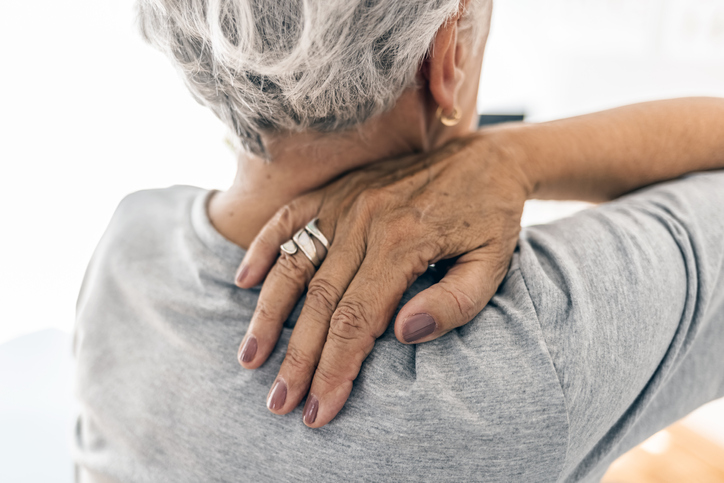
Chronic pain can arise as a result of an injury or a medical condition. Health care providers define chronic pain as pain that lasts longer than three months or remains after the normal recovery period for an underlying illness or injury. Chronic pain can impair a person’s entire life, from job and social activities to sleep and mental health.
According to the Centers for Disease Control and Prevention (CDC), 20% of American adults have chronic pain, 8% having high-impact chronic pain.
According to studies, pain and pain-related disorders are the leading cause of disability worldwide, and the number of people suffering from chronic pain is on the rise. Chronic pain is linked to a variety of physical and mental health issues, including:
- Anxiety or Depression
- Sleeping Difficulties
- Social Isolation
- Overuse of Medications
This article discusses chronic pain management procedures and chronic pain relief options.
4 Best Techniques For Coping With Chronic Pain
-
Physical Technique
Physiotherapy, heat and cold therapy, massage therapy, physical therapy, and acupuncture are all physical methods that can assist in chronic pain relief at Timberlea, NS.
- Hot And Cold Therapy
The use of heat and cold treatment to relieve pain is a widespread and safe practice. Heat has the ability to relax muscles and widen blood vessels. It can also hasten the healing process following an injury.
Cold therapy inhibits inflammation and blood flow, two elements that contribute to pain. The skin is frequently treated with an ice pack wrapped in a towel.
- Massage Therapy
Massage therapy is a soft-tissue manipulation technique. This approach may be beneficial when used in conjunction with other pain management treatments such as physical therapy and pain medication. Massage provides several advantages, including:
- Relaxation
- Enhanced flexibility
- Reduction of inflammation
- Posture improvement
- Improved blood circulation
- Reduced stiffness
- Physiotherapy
Physiotherapy involves utilizing physical procedures to strengthen and stretch muscles and joints. Although it can ease pain all over the body, the techniques used vary depending on which body area is being treated. Therapeutic exercise, which can also help patients cope with pain, can effectively chronic pain. The treatment approach can include light therapy, fitness programs, and massage.
- Acupuncture
Acupuncture is a technique in which fine needles are inserted into the skin at specific places on the body. The following are some of the advantages of acupuncture:
- Relieves pain
- Relaxation
- Reduction of inflammation
- Reduction of muscle spasms
2. Mind-Body Technique
Many people can benefit from psychological and physiological approaches to managing chronic pain.
Cognitive Behavior Therapy
Chronic pain can have a harmful impact on one’s mental health, but it can be alleviated with psychological therapy. According to a review of psychological pain management strategies, cognitive behavior therapy (CBT) had a significant effect on pain reduction immediately after treatment.
Practicing Yoga
Yoga is a type of stretching that aims to relax, strengthen, and keep the body flexible while focusing on specific body regions. Yoga has been reported to help relieve pain by researchers. Yoga can be done at home, with the help of online videos, or in a group setting with an instructor.
Performing Tai Chi
In a Tai Chi practice, slow, continuous, flowing body motions are paired with breathing and relaxation techniques. Furthermore, the method is mild on the muscles and joints. Tai chi can boost a person’s mood by requiring concentration and better strength and joint stability.
3. Relaxation Techniques
Muscle tension, spasms, aches, and pains can all be relieved with relaxation practices. They can also release endorphins, which act as a natural pain reliever. Relaxation can help people release stress and sleep better, which can help them cope with the effects of chronic pain. Chronic pain can be alleviated by using relaxation techniques such as:
- Techniques for Deep Breathing
- Progressive Muscle Relaxation
- Relaxing Activities
- Thinking Calmly
4. Drug Therapy
Various medications can be used to treat pain. Each drug class and kind has its own unique mechanism of action, and some may be more suited to some people than others.
- Nonsteroidal anti-inflammatory drugs
- Antidepressants
- Beta-blockers
- Cannabis
- Opioids
Difference Between Chronic And Acute Pain
Acute pain is characterized as pain that disappears within a few hours, days, or weeks on its own. A small ankle sprain, for example, would be deemed acute discomfort because the pain will dissipate within a few days.
Chronic pain is a persistent ache that lasts for three to six months or more. A variety of factors can cause chronic pain, and it is the most prevalent reason for seeking medical care. It can significantly reduce your quality of life by limiting your movement, generating a prescription drug dependency, and even causing anxiety and sadness. Physiotherapy, on the other hand, can help you prevent all of this.
Conclusion
Chronic pain can be managed using a range of strategies, many of which are accessible and simple to use. Most pain management approaches are designed to alleviate chronic pain or improve a person’s coping abilities. Acupuncture, physiotherapy, and yoga are among pain management techniques that should be done under the supervision of a specialist.
